Table of Contents
Have you selected the pyracantha bonsai tree as your favorite choice and now you are looking for some more genuine information about this plant?
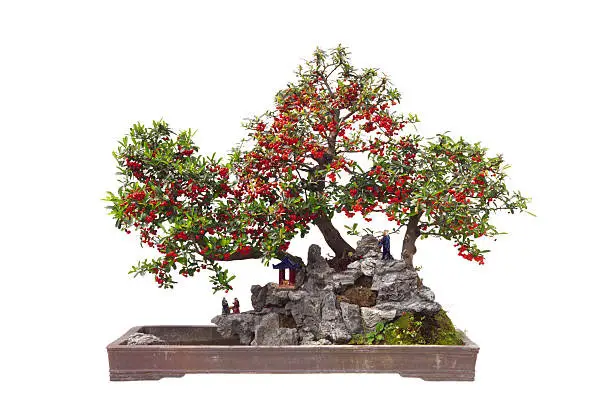
Please keep reading as we are about to share the most comprehensive and genuine information on the pyracantha bonsai plant with you, from maintenance, care to general information and history.
| Scientific Name | Pyracantha coccinea |
| Origin of plant | Asia & a few Mediterranean countries. |
| Water requirement | Water generously in spring and summer. Water it less in autumn and winter. Use your finger to check the moisture in the soil and do not let the soil dry completely |
| Light requirement | Full sunlight or partial shade |
| Flowers | White flowers |
| Fruits | Berries (red, yellow, and orange) |
| Soil | Slightly acidic, neutral, or alkaline |
| Fertilization | Solid organic fertilizer after every 4 weeks OR Liquid fertilizer every week during the growing season. |
Is pyracantha tree a good option for bonsai?
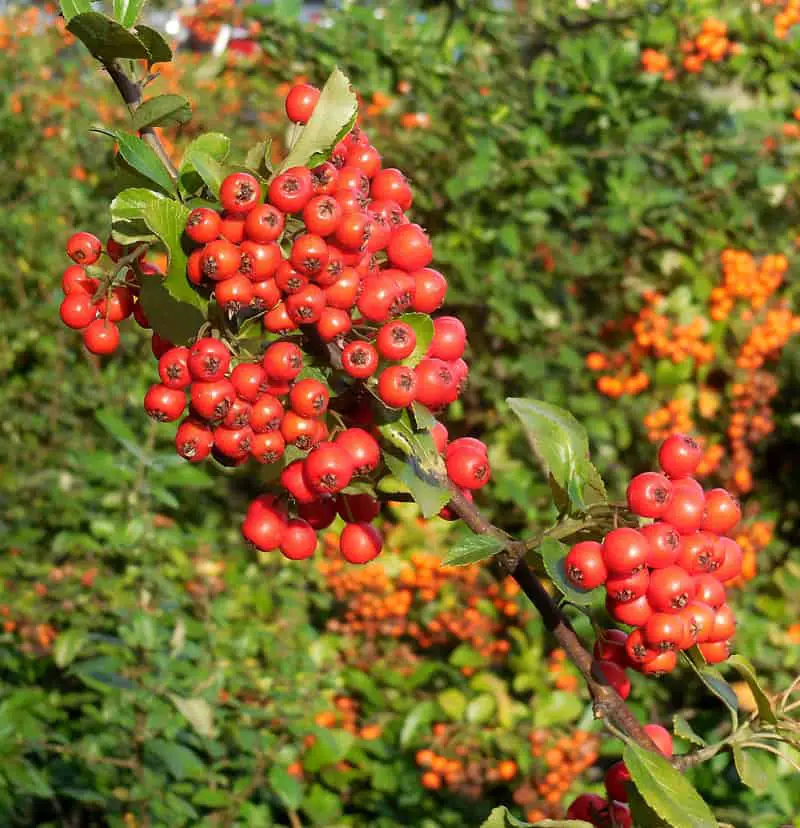
Pyracantha bonsai is one of the excellent options for bonsai. But what makes this plant a good option for bonsai?
The experts say that this plant is very easy to maintain. Watering, fertilization, and repotting are extremely easy and that’s why this plant will always be among the best choices for a bonsai beginner.
If you are just getting into bonsai plants, you will love to have this plant as you won’t have to go through any complex maintenances.
Pyracantha bonsai history
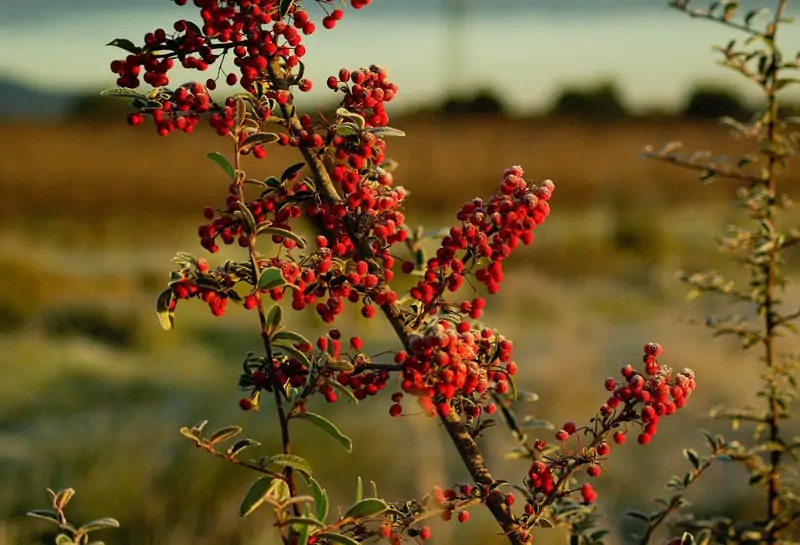
Now let’s talk a little bit about the history of this pyracantha bonsai plant. How did it all start & where did this plant originate from?
Pyracantha is a genus of ten different species. This bonsai plant is native to the temperate regions of Asia and some Mediterranean countries.
Generally, the pyracantha plant is evergreen and has broad leaves along with thorns. If you will leave this plant untrimmed, it can grow as big as up to 18 feet tall. These plants grow white flowers in spring that later turn into red or orange berries during fall.
Pyracantha bonsai scientific name
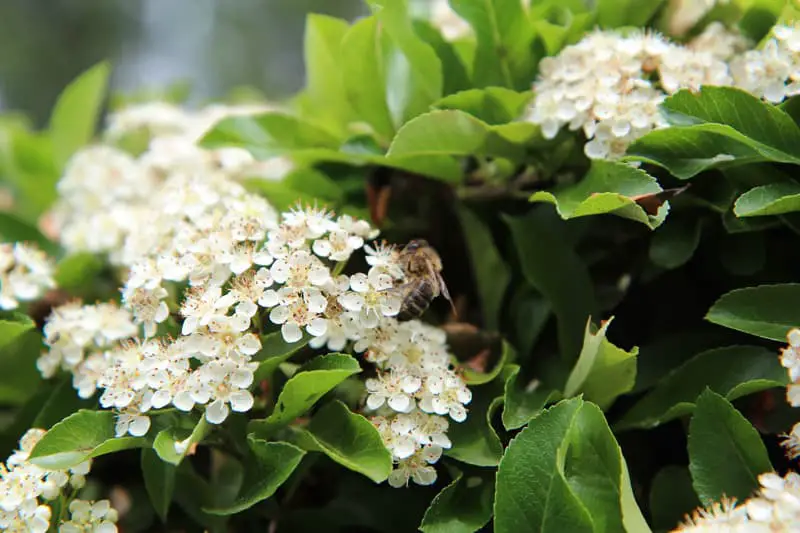
The scientific name of a pyracantha bonsai plant is Pyracantha coccinea.
Now in case you are wondering what does the scientific name of plant means, then let me tell you that: A single plant has so many different names in different languages and different parts of the world. This creates a big confusion among people. That’s why we have one common scientific name for all the plants & animals and that exact scientific name is accepted & used worldwide.
All the scientific community refers to a plant by using its scientific name. The plants are classified into different taxonomical groups and subgroups by the same name as well.
A scientific name consists of two parts. The first part is the genus name whereas the second part is the species name of the plant.
In the case of this bonsai plant, “Pyracantha” is the genus name of the plant whereas “coccinea” is the species name of the plant.
Pyracantha bonsai care
If you are looking forward to growing a pyracantha bonsai plant successfully, then let me tell you that you need to learn how to take care of this plant. Improper care will lead to stunted plant growth and kill your plant.
When it comes to the pyracantha bonsai plant, one has to be familiar with at least the basics of taking care of this bonsai plant. Here’s a list of the main things you have to know:
- Which temperature is safe and unsafe for your plant?
- When to fertilize the plant & which fertilizer to use?
- When & how to prune this plant?
- When & how to water this plant?
- When & how to repot this plant?
- How much light does this plant need?
- Which pests and diseases are dangerous for your plant?
You are lucky to be here because we are going to teach you everything about it right now!
Pyracantha bonsai temperature
The temperature has a significant impact on the health of your plant.
Every plant has an optimal range of temperature under which it can thrive. Any fluctuation in that temperature results in damage to the health of the plant.
Experts say that the pyracantha bonsai plant needs to be protected from intense heat & sun during summer.
Although the pyracantha bonsai plant is frost-hardy, we still recommend you to protect the plant from cold wind and frost if you are growing it in a container.
You can use a cold frame to better protect this bonsai plant in winter.
Pyracantha bonsai fertilizer
Fertilization is very important for the growth of a bonsai plant.
Especially when you are growing the bonsai plant in a pot, it has limited availability of nutrients. Thus, you need to fertilize it after a specific time to supply the plant with nutrients essential for its growth.
For the pyracantha bonsai plant, you can either give it a solid organic fertilizer after every four weeks OR you can use a liquid fertilizer after every 1 week – during the growing season.
You are recommended to use a balanced fertilizer that has enough potassium and phosphorus for promoting flowering and fruit development on the plant.
Pyracantha bonsai pruning/trimming
What is pruning? It is the selective trimming of a bonsai plant to give it a desired shape and style. Pruning is what makes a bonsai plant a bonsai.
Here’s how you should prune a pyracantha bonsai plant:
In late summer or spring, you should remove the dead parts of the plant and also decrease the dense canopy of the plant.
When the new shoots have elongated, you should trim them back to 2 leaves during the growing season.
The pyracantha bonsai plant can tolerate hard pruning as well and can willingly bud from the old wood (if it is healthy). You can remove the large leaves whenever you want. This entire shaping process can be performed with the help of scissors only.
Pyracantha bonsai repotting
The bonsai plants require repotting after a specific time. It keeps the plant healthy and promotes its growth.
You are recommended to repot your pyracantha bonsai plant after 2 years if it is young. But if the plant is old, we recommend you to repot it after every 3 to 5 years.
The entire repotting process is easy because this plant can tolerate root pruning very well. Plus, it does not have any specific type of soil requirements during repotting. You can simply use a standard soil mixture that is well-draining. This plant can easily grow in slightly acidic, neutral, or alkaline soils.
That’s why it is the favorite plant of many bonsai enthusiasts.
Pyracantha bonsai pests and diseases
Every year, thousands of plants die due to the attack of different pests and diseases. You need to beware of all such pests and diseases that can affect your pyracantha bonsai plant.
Studies show that the pyracantha bonsai plant can be attacked by several different pests and diseases.
Pests like caterpillars, spider mites, aphids, and leaf miners can affect your plant.
Fire blight is a bacterial infection that can also affect your plant. The pyracantha bonsai plant is also vulnerable to fungal infections like sooty mold or scab. Overwatering can also lead to the rotting of this plant’s roots.
If you spot an infestation, you are recommended to use a specific pesticide as a treatment option.
Pyracantha bonsai soil
The soil of your pyracantha bonsai plant should have 2 main qualities.
It should be well-draining & it should have a good amount of nutrients available to support the plant’s growth.
You need balanced soil that has both of these characteristics. Now there are 2 options left.
You can either use a completely inorganic potting mixture as it will have both, good drainage and good nutrient availability. You can also use a blended mixture of 60% inorganic aggregate & 40% organic soil. The 40% aggregated portion of this soil is itself a mixture of a lot of things like granite, sand, and pumice. Make sure that there are no pests in the material you are using for soil.
This plant can tolerate slightly acidic, neutral, and alkaline soils which is a very good thing.
Pyracantha bonsai watering
Water is essential for the survival of your pyracantha bonsai plant. But like we said, overwatering can rot the roots of a pyracantha bonsai plant.
What is the right technique for watering this bonsai plant? The exact amount of water that this bonsai plant need keeps changing season to season. When the plant is producing flowers and fruits during summer, it will require more frequent watering.
You have to check the moisture level of the soil every week. Insert your finger one inch or deeper into the soil to check. Here the experts say that the soil should never be left to dry.
During spring & summer, you need to water your plant generously. Keep watering the plant until the water comes out from the drainage holes of the pot.
During winter & autumn, you need to water your plant less frequently. But do not let the soil completely dry out.
When you will water your plant as per this technique then you will get a reward in the form of beautiful fruits & flowers.
Pyracantha bonsai sunlight requirements
The bonsai plant will need sunlight to perform photosynthesis and prepare food vital for its survival and growth.
Experts say that this bonsai plant will need to stay in a fully sunny or partially shaded position during the growing season. In hotter climates, the pyracantha bonsai will need protection from extreme sun and heat. In winter months, this plant will require protection from cold winds and extreme frost.
Pyracantha bonsai styles
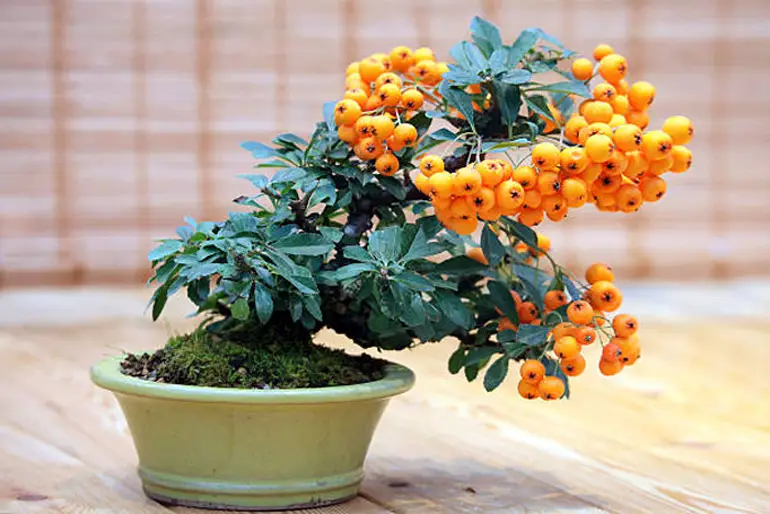
There are so many different species and styles of the pyracantha bonsai plant out there. You can choose your favorite one and bring it home.
Let’s discuss some of the most popular types of them:
Pyracantha coccinea bonsai
Pyracantha coccinea is one of the most famous types of this plant. It is an evergreen tree and it can grow up to 18 feet high.
In spring, this plant grows wonderful white flowers that are attractive to the eyes. After flowering, the plant grows red or orange berries.
The growth rate of coccinea pyracantha is quite slower.
Pyracantha Mohave bonsai
This is an evergreen tree that is famous for its resilience. The Mohave plant produces white flowers in late May and it leads to the growth of wonderful orange-red berries. This plant likes to stay outdoors.
Pyracantha Teton bonsai
The pyracantha Teton bonsai is also called Teton firethorn OR Teton scarlet firethorn.
It is a beginner-friendly plant that is quite tolerant to drought and heat. The branches are also flexible which allows you to style the plant in different shapes and styles.
It likes full sun, partial shade, and loves to stay outdoors.
Pyracantha SP bonsai
The pyracantha SP bonsai loves to stay outdoors because it requires heat and cold for growing fruits.
It is a slow-growth evergreen bonsai that is also known as a firethorn.
The plant has thorny branches and grows white flowers and vibrant yellow, orange, and red fruits in autumn.
Pyracantha Navaho bonsai
Pyracantha Navaho bonsai is also known as the Indian Firethorn. It is popular because of growing vibrant and colorful berries.
Dwarf pyracantha bonsai
The dwarf pyracantha bonsai is an evergreen tree that’s native to Asia.
The leaves of this plant are small and evergreen. It grows a cluster of berries. They are bitter when they are raw but can be used for making delicious jams, marmalades, and jellies.
Pyracantha bonsai symbolism
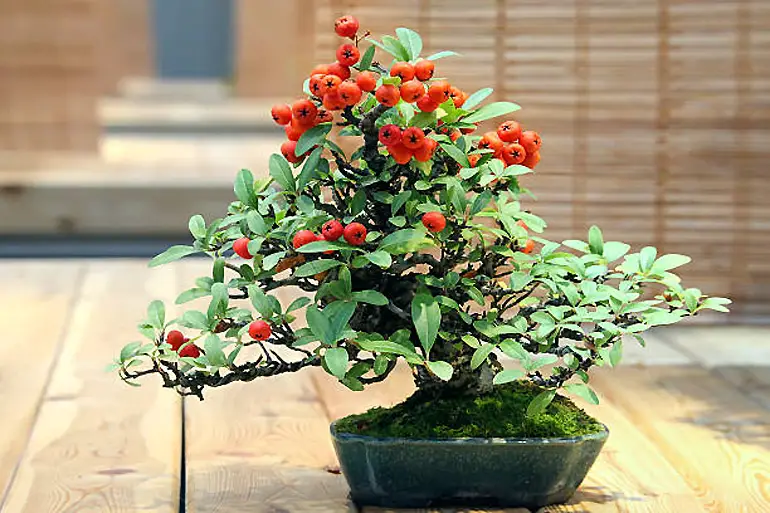
Are you wondering what is the symbolism of this pyracantha bonsai plant?
Well, this bonsai plant is famous for growing cute white flowers that later lead to the growth of fruit. It grows vibrant berries that are colorful (orange, yellow, red) and attract the eyes of the viewers.
Can I grow pyracantha bonsai indoor?
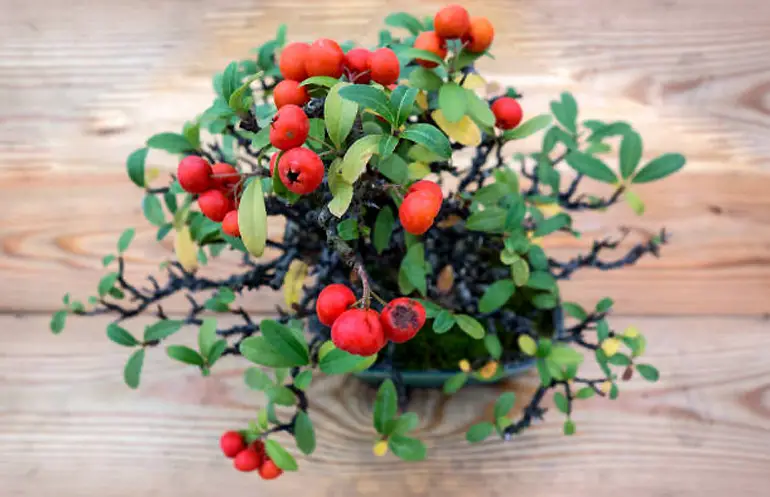
Yes, you can do that but we recommend keeping it outdoor.
Generally, experts say that the pyracantha bonsai plant loves to stay outdoors. It needs full sun or partial shade in midsummer. This helps the plant to grow the beautiful flowers and fruits it is famous for.
However, you can place it indoors during extremely cold weather or frosty nights. This plant can tolerate temperatures as low as -10 degrees Celsius.
But keep in mind that this plant needs plenty of sunlight. It will prefer a cold environment (up to -10 degrees Celsius) outdoors instead of a dark indoor location.
You should place it somewhere in your home where there is bright sunlight.
Is pyracantha bonsai fast-growing?
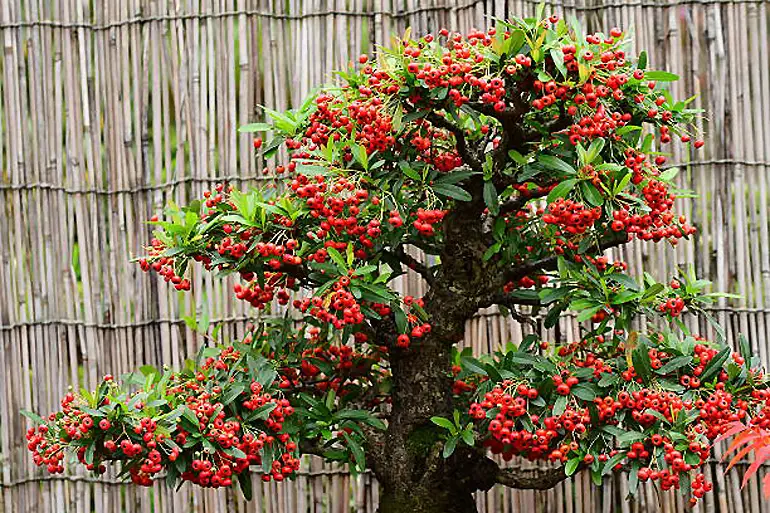
No, it is a slow-growing plant.
Experts say that the growth rate of the pyracantha bonsai depends upon the cultivar.
The small-leaved varieties of this plant show slowed growth whereas the large-leaved varieties of this plant show a bit fast growth.
But in general, this plant will show slow growth when you will keep it in a bonsai pot.
How to bonsai a pyracantha tree?
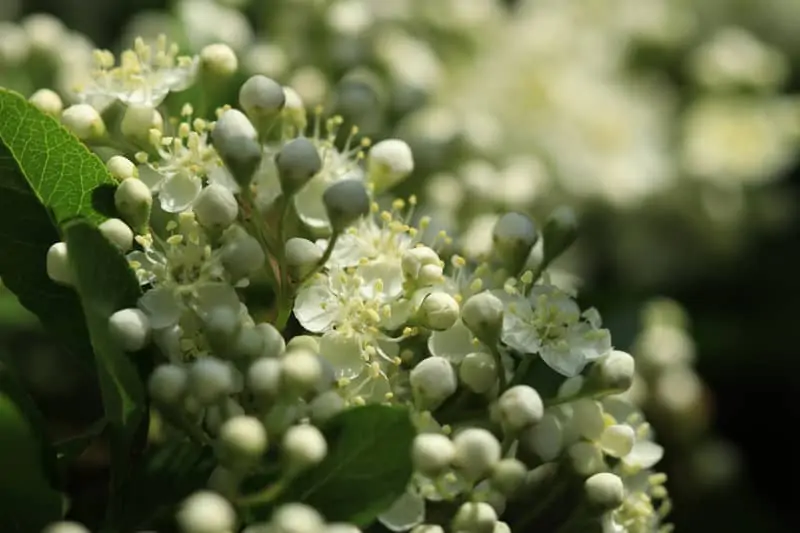
Here are is an easy guide that will help you know how to bonsai a pyracantha tree:
1. Select the tree
In the very first step, you have to select the pyracantha tree which you want to convert into bonsai.
You need a healthy plant. There are 2 ways to get it:
- One is collecting yourself from nature.
- The second is buying a healthy cutting from your local nursery.
If you are a beginner, then go with the second option as finding the right one in nature will be challenging for you.
2. Take care of it
Once you have the plant, you have to take care of it like a bonsai.
You need to follow the instructions we have given you above in the care section.
There you will learn how to correctly water, prune, repot, and fertilize this bonsai plant.
This way you will be able to grow it successfully into a complete bonsai plant.
Common issues in pyracantha bonsai
There are some common issues that almost all the pyracantha bonsai owners face once or more.
Let’s take a look at them & find how you can solve them if you ever encounter one:
| Problems | Solutions |
| Overwatering and root rot – This occurs when you give too much water to your plant OR when you water your plant too frequently. | The solution is to give the right amount of water. You can check the moisture levels in the soil by inserting a finger 1 inch deeper. If it seems dry then water your plant, if it’s very moist then don’t. |
| Underwatering– This happens when you do not water your plant for too long and it eventually dries out and dies. | The solution is to water the plant when it needs. Check the moisture in the soil by inserting a finger. You should never let it dry completely. |
| Wilting due to bad light – This happens when you keep your plant in darkness. | The solution is to keep this plant in full sunlight or partial shade. Do not keep it in dark locations. |
| Temperature problems – This happens when you do not keep your plant at a safe temperature. | You have to protect the plant from extreme heat and sun, cold winds, frost, and extremely cold weather to keep it safe. |
| Over pruning – This happens when you prune your plant carelessly. | We recommend you prune the plant safely as per our instructions. Careless pruning will kill the plant. |
| Repotting problems – when you do not repot the plant or do it too frequently | Repotting weakens the plant and that’s why we do it after every 3 to 5 years only. Not repotting the plant can create problems and prove disastrous for your plant. |
| Fertilization problem – when you do not fertilize your plant at all OR use too much fertilizer | Use a solid organic fertilizer after every 4 weeks OR liquid fertilizer every week during the growing season. |
| Pests and disease attack – When you do not notice & treat pests & disease attack on your plant | Keep observing your plant on regular basis. Look for signs of any pests or diseases and treat them accordingly on time. |
Frequently Asked Questions
What is hurting my Pyracantha Bonsai?
Your Pyracantha Bonsais might be suffering from several problems.
Some of these problems include:
• Too much or too little water.
• Over watering leads to root rot.
• Over watering causes the roots to become weak
Can you grow pyracantha bonsai from cuttings
Yes, you certainly can. But before doing so, make sure that the plant has enough space to grow. Also, make sure that the soil is rich in nutrients.
![Pittosporum Bonsai [Pittosporum Tobira]](https://www.bonsai-express.com/wp-content/uploads/2022/05/Pittosporum-Bonsai-365x200.jpg)
![Sorbus Bonsai [Sorbus Aucuparia]](https://www.bonsai-express.com/wp-content/uploads/2022/05/Sorbus-Bonsai-365x200.jpg)
![Tsuga Bonsai [Tsuga Canadensis]](https://www.bonsai-express.com/wp-content/uploads/2022/05/Tsuga-Bonsai-365x200.jpg)
![Tamarix Bonsai [Tamarix Ramosissima]](https://www.bonsai-express.com/wp-content/uploads/2022/05/Tamarix-Bonsai-365x200.jpg)